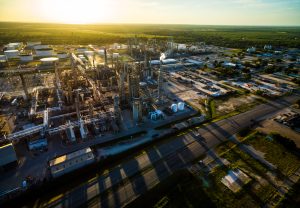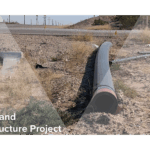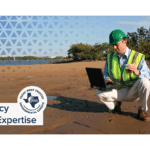
Phase 2 environmental site assessments play a crucial role in evaluating and addressing potential environmental risks associated with a property. In Flower Mound, Texas, these assessments are particularly important due to the town’s commitment to sustainable development and environmental protection. This article will provide a comprehensive overview of Flower Mound Phase 2 environmental site assessments, including their key components, importance, process, regulatory standards, potential challenges, and mitigation strategies. Understanding these aspects is essential for property owners, developers, and environmental professionals operating in Flower Mound.
Understanding Phase 2 Environmental Site Assessments
Phase 2 environmental site assessments build upon the information gathered during the Phase 1 assessment. While Phase 1 assessments focus on identifying potential environmental concerns based on historical records and site inspections, Phase 2 assessments involve more extensive investigation and sampling. The primary objective of Phase 2 assessments is to confirm the presence, extent, and impact of environmental contamination, if any, on a property.
Phase 2 assessments are typically conducted when potential contamination is identified during the Phase 1 assessment or when required by regulatory agencies. These assessments are crucial for evaluating the risks associated with a property and determining the appropriate remediation and mitigation measures.
Key Components of Phase 2 Assessments
Phase 2 assessments consist of several key components that provide a comprehensive understanding of the environmental conditions at a site. These components include:
- Initial Site Inspection: A thorough examination of the site’s physical characteristics, including topography, land use history, and potential contaminant sources.
- Soil and Groundwater Sampling: Collection of soil and groundwater samples from different areas of the property to analyze for the presence and concentration of contaminants.
- Laboratory Analysis and Report Preparation: Testing of the collected samples at accredited laboratories to identify the specific contaminants and their concentrations. The results are then compiled in a comprehensive report.
The Importance of Phase 2 Assessments
Phase 2 environmental site assessments are critical for several reasons:
- Assessing Environmental Risks: Phase 2 assessments provide a detailed understanding of the environmental risks associated with a property, ensuring informed decision-making regarding its development or use.
- Regulatory Compliance: Compliance with federal, state, and local regulatory requirements is essential. Phase 2 assessments help ensure that properties meet legal standards and minimize potential liabilities.
- Protecting Human Health and the Environment: By identifying and assessing environmental contamination, Phase 2 assessments contribute to protecting the health and safety of individuals and the surrounding environment.
Moreover, Phase 2 assessments also involve the evaluation of potential vapor intrusion risks. Vapor intrusion occurs when volatile chemicals migrate from contaminated soil or groundwater into the indoor air of buildings. This can pose a significant threat to the health of occupants. Therefore, Phase 2 assessments include the collection of indoor air samples to assess the potential for vapor intrusion and determine if any mitigation measures are necessary.
Additionally, Phase 2 assessments may involve the use of advanced technologies such as remote sensing and geophysical surveys. These techniques can provide valuable insights into subsurface conditions and help identify areas of potential contamination that may not be readily apparent. By utilizing these innovative methods, Phase 2 assessments can enhance the accuracy and effectiveness of the investigation process.
The Process of Conducting Phase 2 Assessments in Flower Mound
The process of conducting Phase 2 assessments in Flower Mound involves several steps:
Initial Site Inspection
An initial site inspection is conducted to assess the property’s history, potential contaminant sources, and any existing underground storage tanks or hazardous materials. This inspection helps identify areas where soil and groundwater sampling should be focused.
During the initial site inspection, environmental consultants meticulously document the site’s topography, vegetation, and any visible signs of contamination. They also review historical records, such as previous land use and any reported spills or leaks that may have occurred on the property. This comprehensive assessment sets the foundation for the subsequent phases of the environmental investigation.
Soil and Groundwater Sampling
Soil and groundwater samples are collected from various depths and locations across the property. The number and location of samples depend on the site’s size, potential sources of contamination, and regulatory requirements. Sampling methods may include direct push, auger, or borehole techniques.
Environmental technicians carefully plan the sampling locations to ensure representative data collection. They use specialized equipment to extract soil and groundwater samples without cross-contamination, following strict protocols to preserve the integrity of the samples. Each sample is labeled, sealed, and documented to maintain a clear chain of custody throughout the analysis process.
Laboratory Analysis and Report Preparation
The collected samples are sent to accredited laboratories for analysis. Standard laboratory tests are performed to identify the presence and concentration of contaminants. The results are then compiled into a comprehensive report that provides an accurate assessment of the property’s environmental conditions.
Upon receiving the laboratory results, environmental scientists interpret the data to determine the extent of contamination and assess potential risks to human health and the environment. The Phase 2 assessment report includes detailed findings, analytical data, and recommendations for any necessary remediation or further investigation. This crucial document serves as a valuable tool for property owners, developers, and regulatory agencies in making informed decisions regarding the site’s future use and management.
Regulatory Standards for Phase 2 Assessments
Phase 2 assessments in Flower Mound must adhere to both federal and state environmental regulations. These regulations aim to protect human health and the environment by establishing standards for contaminant levels and remediation requirements. Compliance with these regulations is crucial to ensure the accuracy and reliability of the assessment results.
Additionally, Flower Mound has local ordinances that may impose additional requirements for Phase 2 assessments. It is essential to consult these ordinances and work with experienced environmental professionals who are familiar with local regulations to ensure compliance.
Potential Challenges in Phase 2 Assessments
Phase 2 environmental site assessments in Flower Mound may encounter various challenges that need to be addressed effectively. These challenges include:
Dealing with Contaminated Sites
Identifying and managing contaminated sites requires specialized expertise and knowledge of appropriate remediation techniques. Environmental professionals play a vital role in assessing the level of contamination and developing effective strategies for remediation and mitigation.
Addressing Historical Land Use Issues
Historical land use practices can contribute to environmental contamination. Assessing and addressing the impacts of previous land uses is crucial in understanding and managing potential risks associated with a property.
Mitigation Strategies for Identified Environmental Issues
Once environmental issues are identified during Phase 2 assessments, appropriate mitigation strategies must be implemented. These strategies may include:
Remediation Techniques for Soil Contamination
Soil contamination can be remediated through various techniques, such as excavation and removal of contaminated soil, soil vapor extraction, bioremediation, and chemical oxidation. The selection of the most suitable technique depends on the type and extent of contamination present.
Groundwater Treatment and Protection Measures
Contaminated groundwater can be treated using methods such as air sparging, pump and treat systems, and in-situ chemical oxidation. Additionally, implementing measures to prevent further contamination, such as installing monitoring wells and conducting regular groundwater sampling, is crucial.
In conclusion, Flower Mound Phase 2 environmental site assessments are a vital step in evaluating environmental risks and determining appropriate mitigation strategies. These assessments involve key components such as initial site inspection, soil and groundwater sampling, laboratory analysis, and report preparation. Compliance with federal, state, and local regulations is essential, along with addressing potential challenges such as dealing with contaminated sites and historical land use issues. By implementing effective mitigation strategies, Flower Mound can ensure sustainable development while protecting human health and the environment.
If you’re facing the complexities of Phase 2 Environmental Site Assessments in Flower Mound or beyond, ESE Partners is here to guide you through every step. Our team of skilled environmental engineers and scientists is equipped to handle the unique challenges your business may encounter, ensuring compliance, and fostering sustainable development. With a commitment to improving community quality of life and delivering opportunity to stakeholders, ESE Partners offers innovative solutions tailored to your needs. Don’t navigate environmental risks alone. Request A Proposal today and partner with a firm that moves business forward responsibly.








